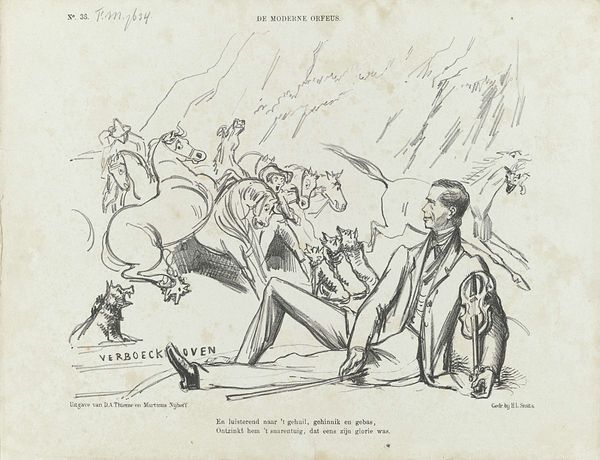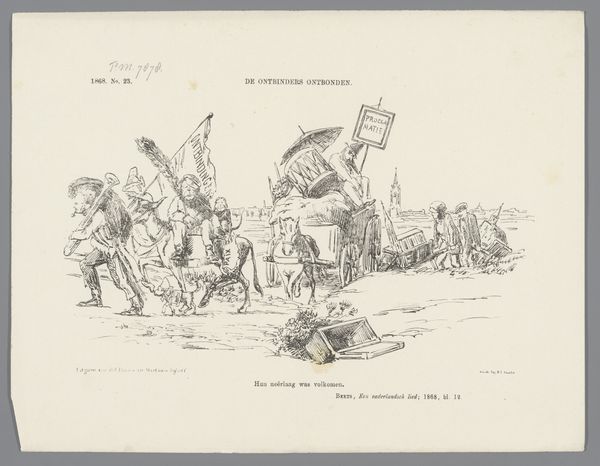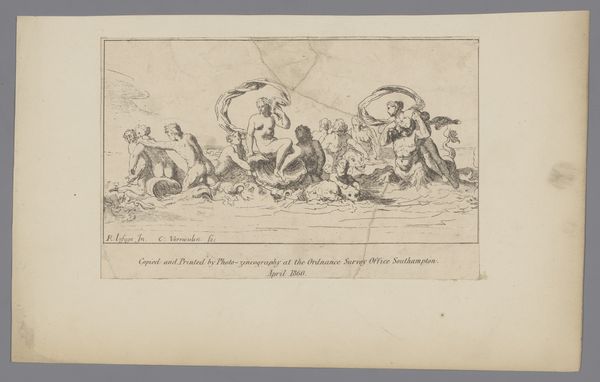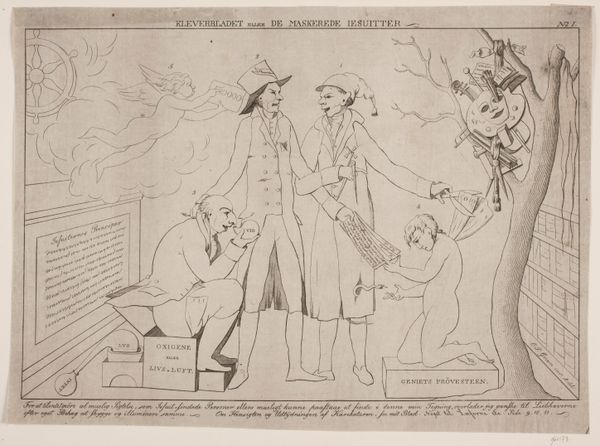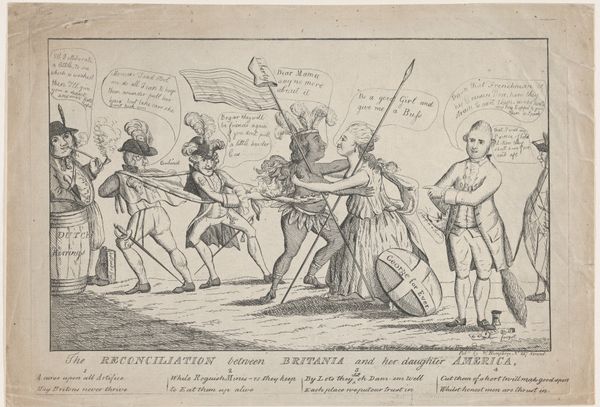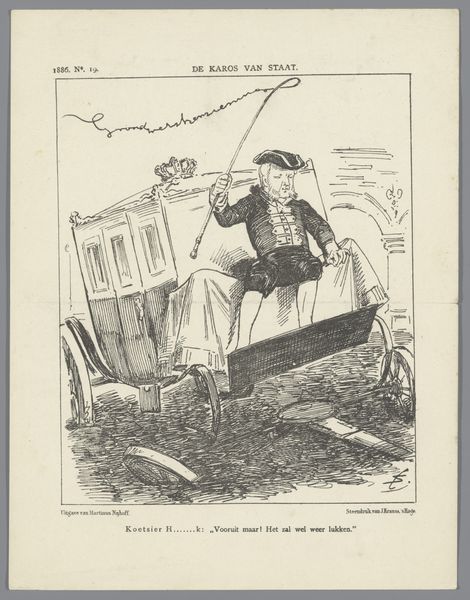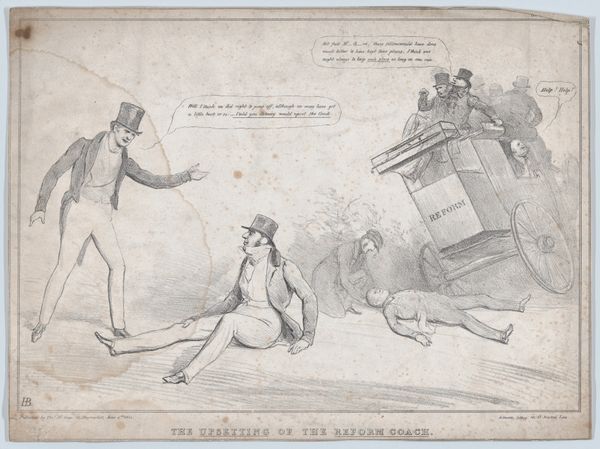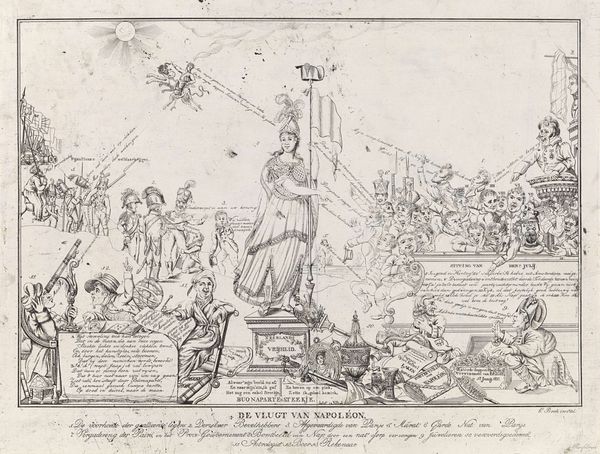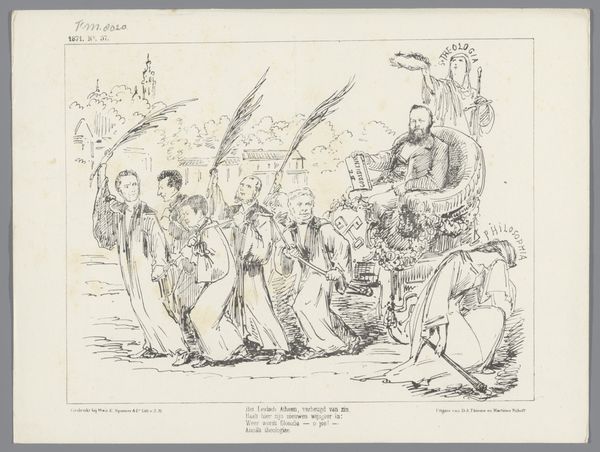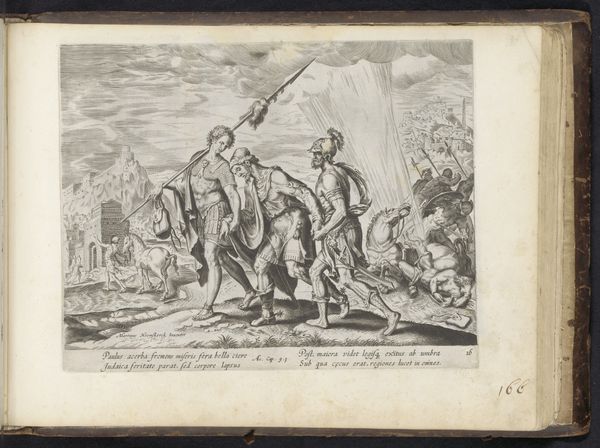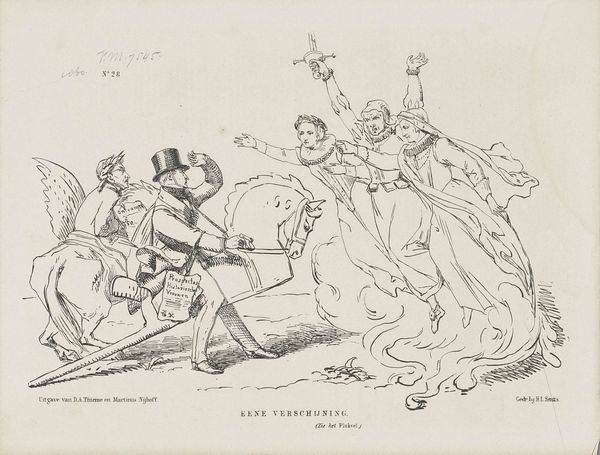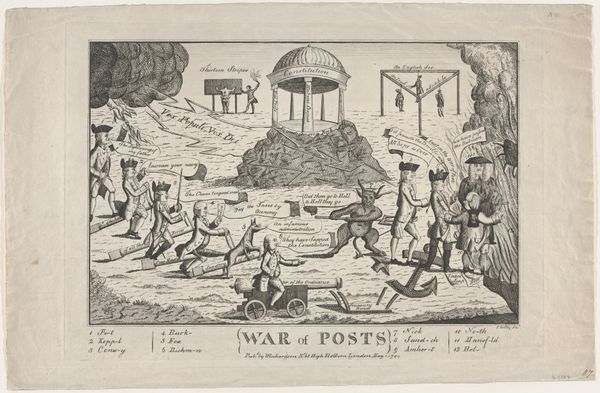
Dimensions: plate: 9 13/16 x 13 3/4 in. (24.9 x 35 cm) sheet: 10 15/16 x 18 3/16 in. (27.8 x 46.2 cm)
Copyright: Public Domain
Curator: Here we have "The Commissioners," a print created around 1778 by Matthew Darly. You immediately notice the etched lines, the text bubbles... what’s your take? Editor: The first thing that strikes me is the rather absurd composition and line work. It’s dominated by the supplicant figures in the foreground begging for mercy, quite a theatrical touch! The image teems with this rigid, repetitive curvature in the speech balloons and even the figure’s poses. Curator: Darly worked primarily with etching and engraving. Given the political unrest of the time, what do you make of him deploying such techniques to create satirical works? Consider how printmaking allowed these criticisms to be widely disseminated and consumed. Editor: Agreed, the technical reproducibility is crucial. But formally, the hatching and cross-hatching create visual interest. He's using linear techniques, reminiscent of caricature, to make quite a direct, cutting statement. Curator: And look closer; the background shows piled-up commodities like tobacco and indigo, representing America's economic importance and its exploitation. I want to add to the mix the role of Britain as consumer. The American Revolution threatened access to materials, but how is it shown? Editor: Note how he stacks all those raw materials; they almost look like an altar before an American Indian. Compositionally, that creates a really unsettling focal point, contrasting dependence versus an idealized freedom of sorts. The light radiating behind this central figure only makes the division stronger. Curator: Indeed. What are we seeing beyond the arrangement, though? Labor and production were completely re-evaluated. A satirical take such as this served a very real function; to mock the establishment in ways words alone could never. Editor: True enough, and those tiny details, each curve, etch and cross-hatch is vital to his central vision. Curator: Examining Darly’s print brings a sharp reminder to stay vigilant of shifts in political climates impacting daily goods and social perceptions, it still rings true. Editor: Ultimately, it’s through details of technique and layout where Darly’s critical commentary truly comes to light and shapes our historical insight.
Comments
No comments
Be the first to comment and join the conversation on the ultimate creative platform.

